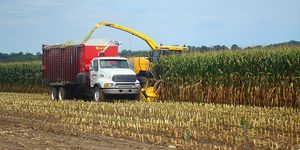USDA Confirms Silage Corn Can Be Planted On Prevent Plant Acres
 This week, farmers in much of the eastern Corn Belt will be eligible to plant cover crops as the late-plant period on prevent plant acres ends there on June 26. Following last week’s announcement about the potential to harvest cover crops on September 1 instead of November 1 many farmers, particularly in the upper Midwest, started to wonder if silage corn would be eligible. According to Richard Flournoy, deputy administrator of product management for the USDA-Risk Management Agency (RMA), silage corn can be eligible for planting on prevent plant acres.
This week, farmers in much of the eastern Corn Belt will be eligible to plant cover crops as the late-plant period on prevent plant acres ends there on June 26. Following last week’s announcement about the potential to harvest cover crops on September 1 instead of November 1 many farmers, particularly in the upper Midwest, started to wonder if silage corn would be eligible. According to Richard Flournoy, deputy administrator of product management for the USDA-Risk Management Agency (RMA), silage corn can be eligible for planting on prevent plant acres.
“A cover crop for crop insurance purposes, we have a broad definition, and it’s generally many things that any crop that can be planted for erosion control, soil improvement, or any other type of conservation practice,” he told AgriTalk host Chip Flory.
If producers have questions about what could be considered a cover crop in their state, Flournoy suggests a visit to the local National Resource Conservation Service (NRCS) office. Individual states can have a list of what crops can be considered cover crops.
Additionally, he says an “ag expert” can deem a crop eligible by determining the prospective crop meets all the cover crop definitions.
“We have on our website a link to all the folks who can be considered an expert,” he said. “A certified crop advisor is [someone] that could say in your area, corn for silage could be a cover crop. One key distinction there is it can’t be corn for grain or seed, as long as it’s for silage [and] it meets that cover crop definition.”
Source: Anna-Lisa Laca, Dairy Herd Management
